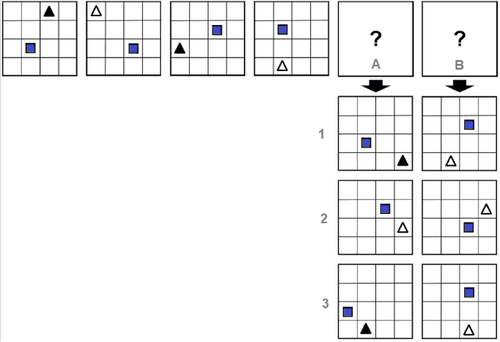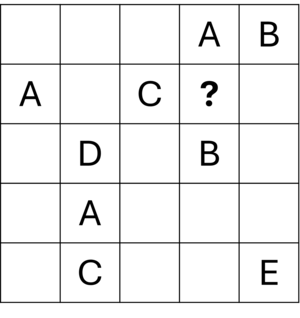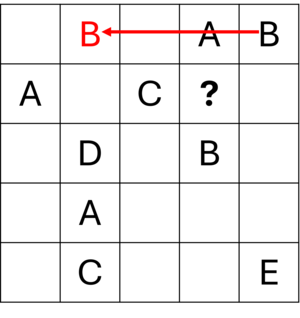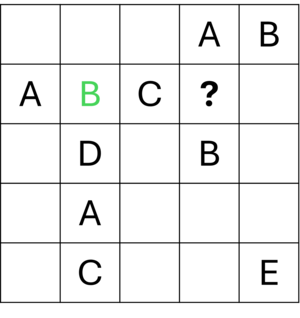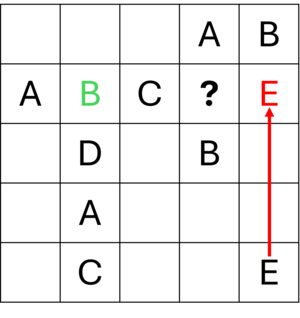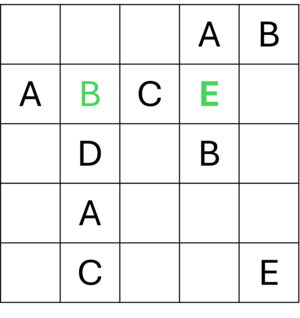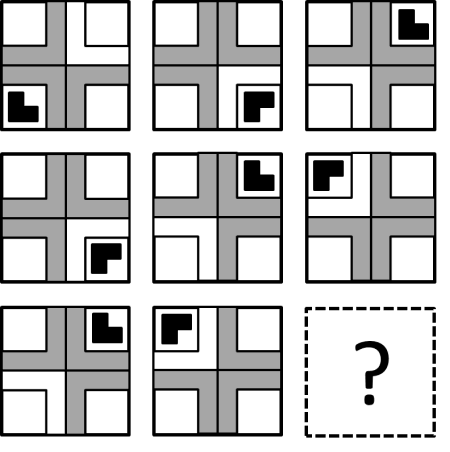Also available in German: Go to German version
Our TestAS preparation helps you train effectively for the digital or paper-based Core Test. Online, realistic and flexible.
The TestAS is an aptitude test for international students applying to universities in Germany. It consists of a general Core Test and subject-specific modules. On this page, you’ll find all the details about the test structure, requirements, and the right online preparation.
Try typical questions from the digital and paper-based TestAS – for free in your browser
Want to see what real TestAS questions look like?
Try our free sample tasks for the digital or paper-based Core Test – directly in your browser.
Only at JobTestPrep
The only realistic TestAS Core Test practice. Online, exam-style and suitable for both formats.
- Practice tests for all official question types
- Full-length simulations under real exam conditions
- Authentic number of questions and time limits
- Step-by-step solutions and targeted tips
Why the TestAS matters
The TestAS is one of the most important exams for international students applying to universities in Germany. See the list of German universities that require the TestAS.
A strong TestAS score can especially improve your chances in competitive degree programmes. Some universities even award bonus points for excellent scores, positively influencing your overall evaluation.
You can choose between two test formats:
- TestAS digital (also referred to as TestAS online)
- paper-based TestAS
Both formats are designed to assess your academic aptitude but differ in format and flexibility. You can take the TestAS in either German or English – you choose the language when you register.
Each format is offered several times a year at certified test centres worldwide.
Focused preparation. The only programme of its kind.
Our TestAS Core Test training is modelled precisely on the official exam formats. Whether digital or paper-based, you’ll practise exactly what to expect on test day.
TestAS 2025 & 2026: Test Dates, Formats and Registration Deadlines
| Test Date | Test Number | Registration Period | Format |
|---|---|---|---|
| 25 October 2025 | TestAS 057 | 06/01/2025 – 09/15/2025 | TestAS paper-based |
| 20 November 2025 | 06/01/2025 – 11/10/2025 | TestAS digital | |
| 24 February 2026 | TestAS 058 | 09/01/2025 – 01/19/2026 | TestAS paper-based |
| 19 March 2026 | 11/02/2025 – 03/07/2026 | TestAS digital | |
| 25 April 2026 | TestAS 059 | 01/05/2026 – 03/13/2026 | TestAS paper-based |
| 9 June 2026 | 01/05/2026 – 05/29/2026 | TestAS digital |
You can retake the TestAS as many times as you wish, for example if you want to improve your score.
The only realistic prep for the TestAS Core Test
Practise with question types, time limits and structure just like in the official exam. Suitable for both the digital and paper-based format.
Start your prep now and take the TestAS with confidence.
Let’s take a closer look at the two TestAS formats.
Digital TestAS: How the test works and what is assessed
The digital TestAS (also referred to as »TestAS online«) is conducted entirely on a computer at a certified test centre and lasts approximately 3.5 hours.
1. Core Module (90 minutes)
The first part assesses your general cognitive abilities – regardless of your intended field of study. It includes the following task types:
- Figure Sequences:
Identify rules and complete graphical patterns. - Mathematical Equations:
Solve equations with multiple unknowns. - Latin Squares:
Insert letters into logical arrangements, similar to Sudoku.
After the core module, you will have a 30-minute break.
2. Subject Module (90 minutes)
The second part assesses skills that are specific to your chosen academic field. You can choose from the following subject modules:
- Humanities, Cultural Studies, and Social Sciences
- Life Sciences
- Mathematics, Computer Science, and Natural Sciences
- Engineering
- Economics
- Medicine
You will answer multiple-choice questions based on texts and tasks relevant to your selected field.
The test is supervised at licensed test centres, entirely computer-based, and your results will be available online about 2 to 3 weeks after the test.
To help you understand what to expect in the digital core module, here is one sample task for each task type.
Digital TestAS: Sample Questions from the Core Module
Duration: 25 minutes
Scope: 20 tasks
You will see a sequence of six matrices. The first four are given, and you must logically complete the last two by selecting the correct figures.
Each matrix contains up to four figures. Their position, colour, or orientation changes according to specific rules.
Your task is to identify these rule(s) and choose the correct continuations.
Possible movements of the figures include vertical, horizontal, or diagonal shifts. Figures that reach the edge either move along the border or bounce off it.
Duration: 25 minutes
Scope: 20 tasks
You will be given two to four equations with two to four unknowns. Your task is to calculate the correct values. All values range from 1 to 20.
By rearranging and strategically combining the equations, you can work out all the unknowns.
Duration: 25 minutes
Scope: 20 tasks
Your task is to complete a 5×5 grid. Each of the five letters (A to E) may appear only once in each row and each column – similar to Sudoku.
Some cells are already filled in, while one cell contains a question mark (»?«). You must identify the correct letter for that cell.
Paper-based TestAS: Duration, Structure and Content
The paper-based TestAS takes approximately 4.5 hours and consists of two main parts:
1. Core Test (110 minutes)
This section assesses general cognitive abilities. You will complete four types of tasks:
- Solving Quantitative Problems:
Tackle practical arithmetic problems based on short text descriptions. - Inferring Relations:
Complete verbal analogies by identifying logical word relationships. - Completing Patterns:
Identify and complete geometric patterns arranged in a 3×3 grid. - Continuing Numerical Series:
Recognise mathematical rules in number sequences and fill in missing elements.
2. Subject Module (~145–150 minutes)
This part focuses on subject-specific knowledge related to your intended field of study. You will take one of the following modules:
- Humanities, Cultural Studies and Social Sciences
- Engineering
- Mathematics, Computer Science and Natural Sciences
- Economics
All tasks are subject-specific multiple-choice questions.
Below you’ll find one sample task from each of the four task types in the paper-based core module:
Sample Tasks for the Paper-based TestAS Core Module
Duration: 45 minutes
Number of tasks: 22
You will solve short word problems based on everyday situations using simple calculations. Each task offers four answer options. Choose the correct one and mark it on the answer sheet.
Duration: 10 minutes
Number of tasks: 22
This task type focuses on verbal analogies. You will be given two word pairs that share the same logical relationship. In both pairs, two words are missing. Your task is to choose the correct words from four answer options to complete the analogy logically.
Duration: 20 minutes
Number of tasks: 22
In this task type, you will see a 3×3 grid filled with geometric shapes. The bottom-right field is empty and marked with a question mark (?). Your task is to identify the underlying rule that determines the arrangement of the shapes and choose the correct shape from six options.
Tip: The pattern may follow a horizontal, vertical or combined logic.
Duration: 25 minutes
Number of tasks: 22
You will see a sequence of seven numbers. The eighth number is missing and replaced by a question mark (?). Your task is to identify the rule behind the sequence and enter the correct number on the answer sheet by marking the boxes that represent the correct digits.
Tip: Each digit may appear only once. Repetitions such as "55" or "99" are not allowed.
Why This PrepPack™ Is Different
Most available materials for the TestAS offer only general practice tasks with no clear structure.
Our Core Test training is the only resource specifically designed to match the official exam. The task types, format and testing conditions reflect the real test – helping you prepare in a focused and effective way.
Key Questions and Answers About the TestAS
Which German Universities Use TestAS for Admission?
The following table shows a selection of German universities that use the TestAS as part of their admission process.
Please note: This list is not exhaustive and is provided without guarantee. Always refer to the official university websites for up-to-date and reliable information.
| University | TestAS Requirement |
|---|---|
| University of Cologne | Mandatory for all bachelor applicants (non-EU) – TestAS certificate (Core Test and subject-specific module) required. Minimum scores vary by faculty. |
| RWTH Aachen | Mandatory for Medicine and Dentistry (TestAS must be taken in German; score required in the top 20%). Conditionally required for other bachelor programmes: required if Abitur score is lower than 2.5 (German scale). |
| University of Hamburg | Optional – accepted for bonus points in all programmes. High TestAS scores provide additional admission points. |
| Otto von Guericke University Magdeburg | Mandatory for Medicine and Dentistry – digital TestAS with the medical subject module in German. TestAS results make up around 49% of the selection process. |
| University of Bielefeld | Optional – accepted as an alternative entrance qualification for applicants with an indirect HZB (Studienkolleg required). A standard score ≥90 in both Core and subject module can replace the Studienkolleg. |
| University of Greifswald | Mandatory for Medicine and Dentistry – minimum score of 100 in the Core Test required. The result is included in the admission formula alongside the Abitur. |
| Johannes Gutenberg University Mainz | Optional – accepted as a bonus in all programmes. Core and module scores can improve the converted Abitur grade by up to 1.0 point (0.5 each). |
| Heidelberg University | Mandatory for Medicine, Dentistry and Pharmacy – TestAS scores contribute to the selection ranking with additional points. |
| University of Ulm | Mandatory for Medicine and Dentistry – TestAS subject module Mathematics, Computer Science and Natural Sciences in German required. Score counts for 50% of the selection ranking. |
| Albert Ludwig University of Freiburg | Optional – considered for bonus points in Medicine and Dentistry. High TestAS scores increase admission chances. |
| Georg August University of Göttingen | Mandatory for Medicine and Dentistry – Core Test and one subject module (STEM, Medicine or Life Sciences) required. Only the module score is used for the bonus. |
| Martin Luther University Halle-Wittenberg | Optional – TestAS scores can improve admission chances. A percentile rank above 80 in both parts increases the Abitur grade by 0.2 points. |
| University of Leipzig | Optional for restricted-admission programmes – TestAS can improve the HZB grade by up to 0.4 points. A 90th percentile score in either part gives 0.2 points; in both parts gives 0.4. |
| Westphalian Wilhelms University Münster | Optional – used to support admissions in Medicine and Dentistry. A tiered bonus system applies based on the STEM module score. |
| Goethe University Frankfurt | Mandatory for Medicine, Dentistry, Pharmacy and Biochemistry – non-EU applicants must take the Core Test and Mathematics, Computer Science and Natural Sciences module in German. TestAS scores count for 49% of the selection score. |
| Justus Liebig University Giessen | Mandatory for Medicine and Dentistry – Core and Mathematics, Computer Science and Natural Sciences module required (German or English). A bonus is applied for scores over 80; maximum bonus for scores ≥123. |
| Hannover Medical School (MHH) | Mandatory for Medicine and Dentistry – only the Mathematics, Computer Science and Natural Sciences module is required (Core Test not used). The score is weighted equally with the Abitur. A score above 126 is treated as equivalent to a 1.0 Abitur grade. |
How Does the TestAS Work?
The TestAS consists of two parts: a core test and a subject-specific module.
The core test assesses general cognitive abilities relevant to all fields of study.
The subject module evaluates skills related to your intended field of study.
Both parts are taken consecutively. You can choose to take the test in German or English. It is conducted under supervision at certified test centres and follows a multiple-choice format.
How Difficult Is the TestAS?
The TestAS is intentionally designed to be challenging. It measures cognitive abilities such as analytical thinking and problem-solving skills.
There is considerable time pressure, and it may be difficult to complete all tasks. Thorough preparation and an effective test-taking strategy can help you cope with this pressure and achieve a strong result.
Important: You cannot pass or fail the TestAS. Instead, you receive a score that is relevant for university applications.
What Is a Good TestAS Score?
A good score is typically above average, usually in the 70–80 percentile range or a standard score above 100.
Top scores (around 125+ in the paper-based test or 150+ in the digital test) can significantly improve your chances of university admission.
How Can I Prepare for the TestAS?
Focused preparation can significantly improve your TestAS performance. Start with the official sample tasks from the TestAS website to get familiar with the test structure and question types.
In addition, our TestAS Core Test 2025 PrepPack™ offers realistic test simulations and step-by-step explanations. You will practise exactly the types of tasks, time limits and requirements you’ll face in the real exam.
More Frequently Asked Questions About the TestAS
TestAS stands for Test für ausländische Studierende (“Test for Foreign Students”). It is an academic aptitude test designed for international applicants who wish to study at German universities.
Both versions, digital and paper-based, consist of a Core Test, which assesses general cognitive abilities, and a subject-specific module, which evaluates skills relevant to your chosen field of study.
- Digital TestAS: Approx. 3.5 hours (including a short break)
- Paper-based TestAS: Around 4.5 to 5 hours, including breaks
The digital TestAS, also called TestAS online, is the computer-based version of the TestAS (Test für ausländische Studierende). It assesses the academic aptitude of international applicants and is conducted fully digitally at certified test centres. Learn more about how the digital TestAS works.
TestAS scores are given in standardised values: 70–130 for the paper-based test, and 0–200 for the digital version.
A score of 100 represents the average performance.
- Digital TestAS: Results are available after approx. 2–3 weeks.
- Paper-based TestAS: Results are published online after about 4 weeks.
The TestAS fee varies by country and test centre. It usually ranges between €130 and €160.
The exact fee will be provided by the test centre during registration.
You can take the TestAS as many times as you like. However, it is advisable to allow enough time between attempts for focused preparation and improvement.
No, aids such as dictionaries or calculators are not allowed in the TestAS.
- Paper-based TestAS: You may take notes, but only on the scratch paper provided.
- Digital TestAS: Taking notes is not permitted.


